We have learnt so much about the geology of other planets. Our spacecraft have discovered ancient oceans and rivers on Mars, and have found possible habitats for life. But we haven't discovered this life itself, and we know nothing at all about extraterrestrial biology. Why is life so hard to spot? Is it there at all, and if so, why is it hidden from view, and how can we find it?
One of the best places to look for this life might be here:
Warm-season flows on a slope in Newton Crater spread over the slopes as the year progresses
It doesn't look like much. does it; a few dark streaks that gradually spread over steep sun facing slopes on Mars in spring and summer? But these particular streaks only appear when temperatures rise above 0°C. This means, they can't be the results of dry ice, or wind, like other dynamic changes in the Martian landscape (like the dry gullies, bright gully deposits, linear gullies, geysers or shifting sand dunes).
Only one explanation so far fits all the data; that these streaks are caused by some liquid which melts at around 0°C, probably water mixed with salts (like brine but probably with sulfates and chlorates as well as chlorides). Nobody knows quite how this works, but it's a rare phenomenon, so must depend on some unusual combination of events. Suggestions include geothermal heating, or deliquescing salts, and rare combinations of chemistry and geology.
The first ones were found in higher latitudes, but last year some were found in equatorial areas of Mars too; areas that just a few years ago were thought to be completely dry to depths of hundreds of meters.
Water seems to flow freely on Mars (nature article about the recent discoveries of warm seasonal flows in equatorial regions of Mars)
So, if there is life on Mars, it might actually live in these warm seasonal flows. But most of it would probably be hidden from view, a cm or so below the surface, so we wouldn't expect to see much in our photographs.
The Mars surface is almost unimaginably harsh with strong ultra violet light, cosmic radiation, and near vacuum for the atmosphere. Almost all Earth life would die there. But there are microbes that could survive.
UV light is easily blocked, say, by a shadow of a boulder, or a few mms of soil. Also some Earth cyanobacteria have pigments in their cells that block out the worst of UV light while letting ordinary light through for photosynthesis. These may be able to survive in partial shadow on the Mars surface, so martian microbes may be able to do this too.
As for cosmic radiation, the levels on the surface of Mars are roughly similar to the levels in the interior of the ISS. This is quite a high level of radiation compared with the surface of the Earth, easily enough to destroy the most radiotolerant microbes such as chroococcidiopsis or radiodurans in its dormant state, after a hundred thousand years or so. But if these microbes are able to wake up more often than that, even briefly, they can repair their damage and keep growing. It is no problem at all for a microbe that wakes up every year.
Here chroococcidiopsis is often mentioned in the literature as a likely microorganism for Mars as all it requires is carbon dioxide, and some light for photosynthesis and nitrogen and trace elements. Radiodurans is less likely to survive on Mars as it is an obligate aerobe. However there another closely related species of Deinococcus, Deinococcus grandis, which is a facultative anaerobe, so perhaps deinococcus may also be useful as an analogue for life on Mars? Both chroococcidiopsis and deinococcus have the remarkable ability to repair their own DNA while still alive, within a few hours. The way it works is that they have their DNA bound together tightly in a torus shape, and if it is broken, the pieces remain close together and can be joined up again, so long as it isn't broken in too many places.
Most life would probably be a cm or so below the surface, hidden from the UV, and the rapid drying effects of the daytime sunlight and the vacuum. Perhaps it's been there continuously since Mars was more habitable, or it retreats to caves or underground, maybe in dormant states, at times when the Martian climate is harsher than it is now.
There might also be life right on the surface.
These dark dune spots change seasonally, spreading and turning from gray to black. They most likely have an inorganic explanation, but some Hungarian researchers wondered if perhaps these may be signs of life spreading over the surface; photosynthetic life that starts gray, and dies and desiccates and goes black as the season progresses, taking advantage of water ice melted by a solid state greenhouse effect beneath layers of dry ice. See also Possible Crypto biotic crusts on Mars?
It now seems that they are caused by geysers that break through overlying layers of dry ice. These geysers are not well understood, and several mechanisms have been suggested. One idea is that the dry ice sold state greenhouse effect heats up ice below the dry ice until it sublimates into a vapour phase and blows off the overlying slab of dry ice.
The evidence for the geysers is strong, but that doesn't rule out the possibility of subsurface melts happening as well. Recent research suggests that as well as the "dry" geysers, many of the associated features may be caused by melting of subsurface brines. So it's possible that some of the associated features are signs of life. See the section "Dune Dark Spots and Flow-like Features" in "Water and Brines on Mars: Current Evidence and Implications for MSL"
It is hard to tell what they are from orbit. Perhaps some day we can send a "Geyser Hopper" to study them.
Experiments with chroococcidiopsis, the tough desiccation and radioresistant cyanobacteria, suggest it might be able to survive and even grow, on the surface of Mars, using the 100% night time humidity as a source of water. It can use pigments to help block out the UV light. Martian life forms may be able to do the same, so it seems that surface life on Mars is not impossible, so perhaps some of the temporary features we see could be caused by life or partly caused by life.
However, though life on the surface may be possible, most life on Mars would probably live perhaps one or two cms below the surface, protected somewhat from desiccation and from UV light, and would be hard to spot from orbit.
It's the same for all the proposed habitats on other solar system bodies; most life would be hidden beneath the surface, or in one way or another, hidden from view (including, hidden within clouds in the case of Venus cloud life).
So, if there is life there, it is likely to be hiding. Not from us, but from the harsh conditions on the surfaces of the planets and moons of our solar system, such as UV radiation and the desiccating effects of vacuum or low pressure conditions.
SIMILAR CRYPTIC LIFE IN THE COLD DRY MC MURDO VALLEYS IN ANTARCTICA
Here is one of the McMurdo dry valleys in Antarctica
It's cold and dry like Mars; though the thick Earth atmosphere makes it far more habitable than anywhere on Mars. And life is there, though you can't see any signs of it in the aerial photographs or on the ground either. The only way to find it is to look inside rocks or dig into the soil.
If there is life outside of Earth, most of it is almost certainly hidden from view like this. The life in the McMurdo valleys is also sparse, and it includes some of the longest lives microbes on earth. Some of them have lifetimes of millennia. That's a lifetime of thousands of years for a single microbe, because it metabolizes so slowly, in the cold dry conditions there.
The populations are also scattered and hard to find. Curiosity could look straight at the rocks and sand, and see nothing. Even a rover equipped with biosignature detectors might have to drill down, and search many times before it finds anything.
"The Dry Valleys analog to Mars suggests that conditions favorable to permit life (as we know it) are likely present in some places on Mars even now. If life is present it may be hard to find, however, because it may be distributed like life in the Dry Valleys, i.e. scattered heterogeneously and apparently even absent from some places. If the Dry Valleys analog holds true, martian life might not be found in the most obvious-seeming places either. Mahaney et al. for example, discovered that life was closely associated with salt-rich horizons rather than others that might seem to us to be less hostile to life. The heterogeneous nature of life in the Dry Valleys indicates that in order to search for life on Mars, many samples will be needed. Sampling locations should include different climate regimes, different locations within each regime, and different depths beneath the surface." - Antarctic Dry Valleys and indigenous weathering in Mars meteorites: Implications for water and life on Mars
Then, on Earth every possible habitat, such as cooling lava, gets inhabited soon after formation. The new volcanic island Surtsey, in Iceland has established an entire complex ecosystem within 50 years of its formation.
On Mars it must be far harder for life to spread. For all we know, it might take thousands, or millions of years for a new patch of these warm seasonal flows to get colonized.
FOLLOW THE NITROGEN
Of the main elements needed for life, the one element most in short supply on Mars is nitrogen. This is so vital for life that exobiologists have suggested it's as important to "follow the nitrogen" as to follow the water. It's important because nitrogen bonds are easily broken and are central to biology as we know it. So even if life on Mars is very different from Earth life, perhaps using different amino acids for instance (see Alien life could use an endless array of building blocks) and perhaps use PNA or some other form of XNA (Xeno nucleic acid) with a different backbone from DNA, still it is likely to use nitrogen if it resembles Earth life.
There is some in the atmosphere, about 1.89% as measured by Curiosity. or a bit over 0.1 mbar. Can life use that? Or is there some other source of nitrogen on Mars?
Nitrogen can be fixed by volcanic processes and lightning.
Another idea suggested recently is nitrogen fixation in pure water metastable thin liquid films (different from the salty brines habitat) on Mars (cooled below the point where they would normally freeze). See An active nitrogen cycle on Mars sufficient to support a subsurface biosphere
Mars should also get nitrogen from meteorites. The amounts would be small, but still, they should build up to comparable to levels in desert landscapes on Earth, and that's all you need for a sparse population of slowly metabolizing microbes.
Curiosity has detected sulfur, nitrogen, hydrogen, oxygen, phosphorus so all the main ingredients you need for life are there. However we need to look in the right place to search for life.
SEARCHES FOR ANCIENT LIFE
The search for ancient life is likely to be just as hard. Curiosity has found some organics at last, but it took it over a year to find them. Something seem to destroy all organics on the surface, probably a combination of cosmic radiation and chemical processes. The scientists have hypothesized that the patch of organics must have got uncovered recently. What's more they could test that hypothesis using a recently developed clever application of the potassium argon technique to the equipment on board SAM.
Results just in show that the area with the organics was probably uncovered between 30 and 110 million years ago. Perhaps it was covered by other layers that got eroded away by the dust storms.
Yellowknife Bay (NASA)
Curiosity has found traces of what seem to be organics in this area of Mars. It can't detect the organics directly, only detect the carbon dioxide given off when it is heated in an oven. So the scientists are cautious about the results but the most likely conclusion seems to be that it found organics. It can't tell if the organics originate in meteorites or are a product of Martian life.
Curiosity had previously detected sulfur, nitrogen, hydrogen, oxygen, phosphorus so all the main ingredients you need for life are there.
You might think the obvious thing to do is to return a sample to Earth to analyse. But, so far anyway, there's no reason to believe that this is ancient life, though it might be. We don't even know for sure that it really is organics, though it probably is. But if it is, it might just be organics from meteorites. Curiosity was expected to find these, and it was quite a surprise actually that it didn't find them earlier. The concentrations of organics detected is low enough so it could easily be from meteorites and Curiosity is not equipped to tell the difference.
Indeed, we have only sent two spacecraft anywhere with the ability to detect life directly, the two Viking landers, in the 1970s.
This is a view from the Viking 1 lander. It was able to dig deep trenches in the sands of Mars, as you can see in this photograph, and had experiments to test to see if it found life in the samples.
It's results sadly were inconclusive, and it gathered other data suggesting that Mars was even more inhospitable than we thought. So, after Viking we stopped searching directly for life on Mars and instead sent rovers to search for evidence of water and past habitability.
For about a quarter of a century, after Viking, most scientists thought that present day life on Mars was extremely unlikely. This changed in the last five to ten years.
One of the Viking experiments, the labeled release, gave strange results that scientists argue about to this day. Most intriguingly, recently the Viking data was re-analysed and found to have a clear signal of what looks like a circadian rhythm with a period of one Martian sol. Most scientists remain reasonably sure that it only detected some unusual chemistry, but we haven't sent a follow up mission to check on this. Meanwhile we can only speculate about what it found.
We have plenty of new biodetection instruments we could send, far more sensitive than anything Viking had. In fact, we have sent one of those into space, but it hasn't yet reached its target. It's due to land on a comet later this year (autumn 2014). That's the Philae lander from the ESA comet encounter mission Rossetta.
Artist's impression of Philae after it lands on Comet 67P/Churyumov-Gerasimenko in 2014 (Image credit NASA)
Philae will test for chirality. All DNA spirals in a clockwise direction, and this seems likely to be a characteristic of life, that it would create asymmetrical molecules, and that only one of the two possible forms would replicate. But Philae is not searching for life on the comet. Rather, it is looking to see if the chemicals delivered to Earth were already biased in one way or another before life arose, perhaps helping life to get started, and it might explain why DNA spirals in a clockwise direction.
SAC which is included in the Philae lander and is designed to find long chain organic molecules, and test for chirality.
We could have sent similar instruments to Mars long ago. Certainly it would have been possible to send an instrument like that on Curiosity. Rosetta was launched in 2004.
However, until about five years ago, most mission scientists didn't think that we were likely to find present day life on Mars, and the chances of finding ancient life didn't seem that great either until about a decade ago.
JAMES LOVELOCK'S ARGUMENT
James Lovelock,came up with an intriguing argument in the late 1960s and early 1970s. He was a researcher looking into the possibility of life on Mars.
James Lovelock in 2005
Lovelock reasoned that if there was life on Mars or Venus, it should put the atmosphere out of equilibrium, just as it does on Earth (where the highly reactive oxygen in the atmosphere puts it well out of equilibrium). He suggested analysing the atmospheres of other planets as a life detection method. When we look at the chemistry of the Venus and Mars atmospheres ,both are almost exactly in equilibrium. Therefore, he argued, there couldn't be significant amounts of life on either planet. This was the origins of the idea he eventually turned into the Gaia hypothesis
CLOSED ECOSYSTEMS
Only a few years after James Lovelock produced his argument against life on Mars, a remarkable discovery was made, entire communities of creatures living deep under the sea, too deep to use light to survive. These were the hydrothermal vent communities.
Dense mass of anomuran crab Kiwa around deep-sea hydrothermal vent
These ecosystems are more or less cut off from all other ecosystems, and derive energy from hydrogen sulfide and other chemicals rather than light. The multicellular life depends on oxygen dissolved in the sea water, but many of the micro-organisms don't need the oxygen.
Since then several other types of closed ecosystem have been discovered on Earth with almost no communication with the Earth's atmosphere, including white smokers, Cold seeps, subglacial lakes such as Lake Vostok, Movile Cave (complete ecosystem isolated from surface and relying on chemosynthesis rather than photosynthesis with oxygen levels half those of the surface) and Endoliths capable of surviving kilometers underground,
So that gave rise to the idea that there could be similar closed ecosystems on other planets, deep underground, cut off from the atmosphere. Because they aren't coupled to the atmosphere, then there would be little or no trace of life activity in the composition of the atmosphere.
SPARSE ECOSYSTEMS AND SNOWBALL EARTH
Another discovery is that of sparse ecosystems such as the ones in the McMurdo Valleys. There is evidence that suggests that about 650 million years ago, Earth went through a snowball Earth phase, or possibly a "Slushball Earth" when the entire surface was covered in snow and ice, possibly with some free sea at equatorial regions. During this phase, it would be almost devoid of life on the surface, much like present day Mars, though with a much thicker atmosphere.
In Earth's snowball phase, temperatures would average -50°C similar to Mars, and the most hospitable areas on Earth would resemble the McMurdo Valleys. The McMurdo dry valleys are often used as an analogue for Martian conditions.
Earth was not an exact analogue of Mars in its snowball phase of course. It still had its thick atmosphere, and still had oxygen, but had high levels of carbon dioxide produced by the volcanoes. These eventually contributed towards warming Earth and brought it out of the snowball phase.
However let's imagine that Earth had a thinner atmosphere, no continental drift, and never escaped from its snowball phase. In that situation, the atmosphere would eventually reach equilibrium and if it never recovered from its snowball phase, then the sparse life remaining on its surface wouldn't be able to make a significant difference to the atmospheric composition. That's pretty much how we see Mars today, as a planet that used to be similar to early Earth but went into a snowball phase and never escaped it. The main difference is that Mars also has hardly any water and so the entire surface is dry apart from its polar ice caps.
HADEAN ATMOSPHERE ON EARTH COMPARED WITH MARS NOACHIAN
Early atmospheres on Earth might well have been close to equilibrium. The Hadean atmosphere probably consisted mainly of carbon dioxide, possibly also with nitrogen and water vapour. Though there was probably life there already, you'd see little trace of it in the atmosphere. Later on in the Archaean period, the atmosphere remained more or less in equilibrium, perhaps with trace amounts of oxygen, until the great oxygenation event, which is the event that put our atmosphere massively out of equilibrium.
So if ancient Mars resembled ancient Earth, there is no reason particularly to expect that the atmosphere back then was noticeably out of equilibrium either, certainly not to the extent Earth is today. We could point a telescope at a distant Earth twin in its own Hadean or Archean period and might be able to spot little by way of signs of life in its atmosphere. We would need to look for trace gases and if the ecosystems are mainly in the ocean depths and decoupled from the surface, or underground, we might not spot any evidence of life there at all.
NEW EVIDENCE FOR POSSIBLE HABITATS ON MARS
It was the Phoenix mission in 2008 that changed everything; along with new evidence from the orbiters of ancient oceans and many new features such as the warm seasonal flows. Again all this happened in the last five years or so.
The main new discoveries were:
- droplets on Phoenix's legs which coalesce, grow, and fall off - with most straightforward interpretation as salty water droplets forming through deliquescence of salts thrown up on its legs from the surface.
- discovery of salts which theory suggests should deliquesce to make droplets like that in the 100% night time humidity on Mars - something that happens on Earth also in Antarctica
- Isotope measurements showing that there is something on the surface which has exchanged oxygen with the CO2 in the geologically recent past (analysis done in 2010)
- The 2011 discovery of warm seasonal flows, which have no alternative explanation at present except flows of some liquid that melts at around 0°C, most likely water.
Here is another view of one of the regions with warm seasonal flows, this time in Horowitz Crater (Terra Cimmeria)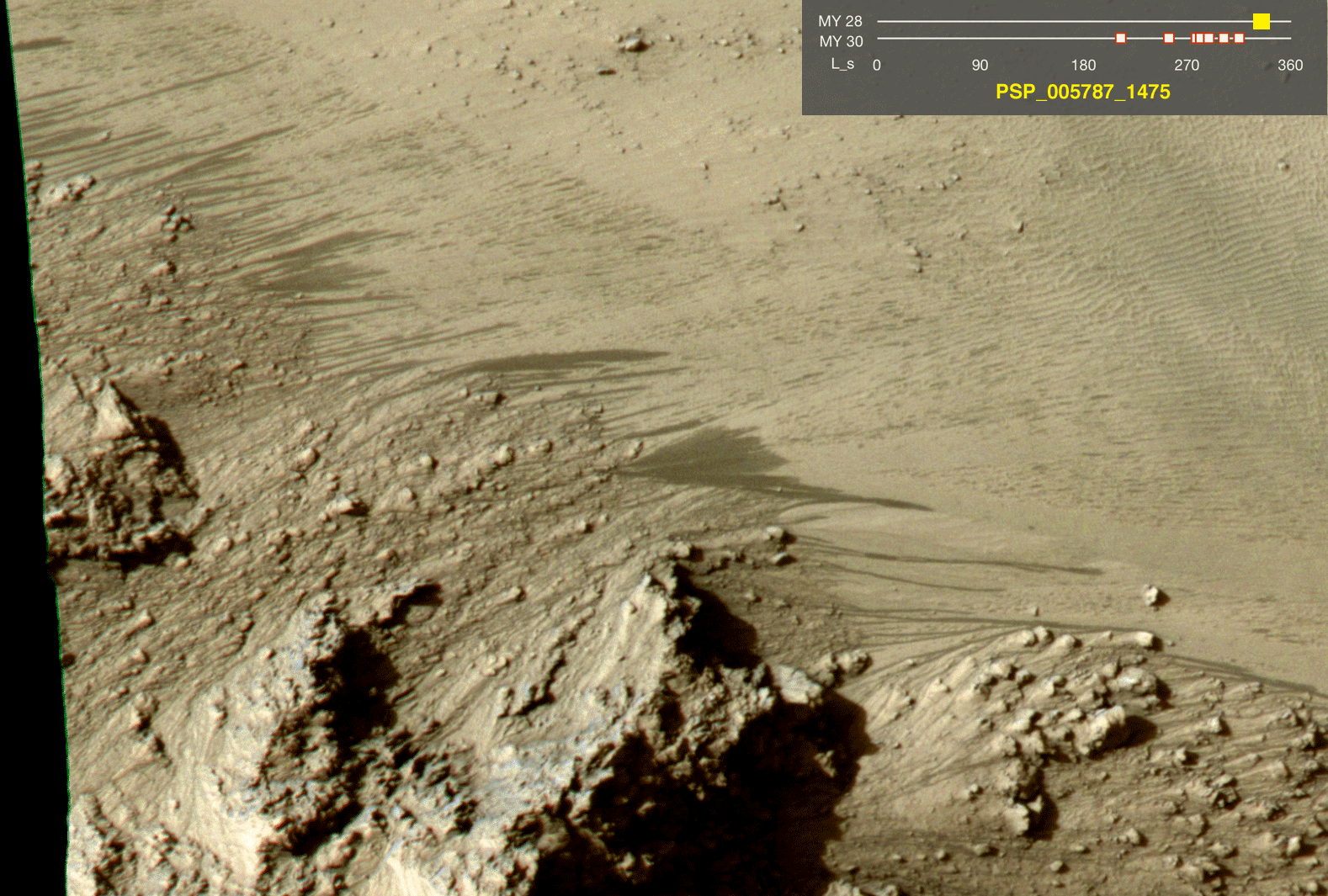
Following Phoenix, and the recent orbiter discoveries, research in this area has exploded, with many papers every year about possibilities of life on present day Mars, and a major several days conference last year The Present-Day Habitability of Mars 2013
This is a good recent (2013) overview of the research on possible water habitats on Mars which looks at just about all the possibilities to date, likely or unlikely. Water and Brines on Mars: Current Evidence and Implications for MSL
The three ones most likely to be liquid water are
- warm seasonal flows, which have no other good explanation at present
- deliquescing salts supported mainly by the droplets on Phoenix's legs and the observation of suitable salts to deliquesce on Mars
- subsurface melts caused by the solid state greenhouse effect. Seems that this should happen on theoretical grounds, and a somewhat similar mechanism, subsurface sublimation of water, is the main hypothesis for the Martian geysers.
The deliquescing salts habitat is not just a theoretical idea for Mars. In the very heart of the Atacama desert, where conditions are too dry for cyanobacteria to grow under quartz, endolithic cyanobacteria are able to survive in dry salt deposits, using exactly this technique. They use the water taken up by the salts when the moisture content of the air is high enough.
It turns out - results of research published in 2013 - that in the Atacama desert these deliquescing salt inhabiting microbes can even obtain water from the atmosphere when it is too dry for salt to deliquesce. This happens inside nanopores 0.1 microns across. Perhaps martian microbes could use a similar technique to extract water from the atmosphere in conditions you'd think were too dry for them, and hold onto it longer than you'd expect.
The other major recent discovery is new evidence of ancient seas on Mars. Evidence of this has gradually mounted over the last decade or so, and is now pretty much incontrovertible, with ancient sea shores traced around the northern low parts of Mars and good evidence now of ancient deltas that flowed into the seas.
WHY OUR ROVERS WOULDN'T BE ABLE TO SEE A THING
There are several reasons why our current rovers can't see this life
- You probably have to dig beneath the surface of the soil or drill into the rock to find it. Curiosity can drill but only a few mms.
- They are looking in the wrong place. Curiosity was deliberately sent to the driest part of Mars because it is not sterilized sufficiently to visit places where life could reproduce.
- They don't have the optical resolution. Curiosity could find fossils of ancient life, but it couldn't see fossils of individual microbes. It's "hand lens" has a resolution of up to 14.5 microns which is far too coarse to see anything except the very largest of cells. Most cells are at most a few microns, many are smaller and ancient life on Earth must have been far smaller before present day cells evolved for the first time
- Curiosity can detect organics but has no way of testing to see if these organics are from life or from meteorites
COULD OUR ROVERS FIND MULTICELLULAR LIFE?
Yes if it's there, it would be easier to see, the question is though, is there any multicellular life to find?
Our best guess is that these surface communities are likely to be single cell. At any rate, on Earth similar habitats are occupied by single cell life, and life on Earth is the only basis we have for our speculations about Mars, though of course it could easily lead us astray.
On Earth anyway, the ecosystems are simple also, indeed some areas of the Atacama desert have single species ecosystems consisting only of the microbe chroococcidiopsis (see also Cryptoendolithic Lichen and Cyanobacterial Communities of the Ross Desert, Antarctica) - though usually they are associated with secondary consumers as well.
For a nice overview of these Earth analogs of martian life, see Cyanobaceteria in hot and cold desert rocks (2012, chapter from Adaption of Microbial Life to Environmental Extremes).
It's also possible that Mars never evolved mult-cellular life, as it was only Earth like for a few hundred million years. It took over two billion years for Earth to evolve to multi-cellular life though we have no idea of course about whether that is typical of life generally on other planets. Multicellular life arose on Earth after snowball Earth in the Proterozoic .
Of course Mars went into a similar snowball phase far earlier - and it recovered from it briefly with a second ocean. You could argue that it might have developed multi-cellular life if there is a cause and effect connection there. Or perhaps hardy multicellular life could get transferred from Earth in meteorites. But in short we just have no idea if Mars ever developed multi-cellular life.
If it did, the best place to look for it could be underground, perhaps in caves with trapped layers of brine kept liquid by geothermal heat. Or even deeper underground. Multicellular life has been found over a kilometer below the surface of the Earth ( a 0.5 mm long nematode, nothing spectacular but remarkable even so) so could perhaps exist deep underground on Mars also.
Halicephalobus mephisto lives deep underground where it feeds on colonies of bacteria. Photograph credit University of Ghent, Belgium - Gaetan Borgon
If Mars does have multicellular life, it may be kilometers below the surface like this, or perhaps might exist in caves with trapped layers of brine (a bit like the way oil is trapped in an oil well) kept molten by geothermal heat.
In short, our chances of finding multicellular life on Mars seems remote. But can't be ruled out, especially deep down life, and there's also the chance of finding multicellular fossils, if it ever arose in the Martian past when surface conditions were more hospitable. But our rovers haven't found any large fossils yet, so if they exist, they aren't easy to find.
Multicellular life might exist in other places. The best bet for multicellular life might be the Europan subsurface oceans. These may be oxygen rich (through radiation from Jupiter dissociating oxygen in the ice) and have been continuously liquid probably for billions of years, plenty of time for multi-cellular life to arise.
Europa's subsurface oceans. This might be the best place to look for multicellular extraterrestrial life in our Solar system. The oceans have multiple energy sources most likely including geothermal vents, and oxygen diffusing down from the surface where the intense radiation from Jupiter breaks the surface ice into oxygen and hydrogen. However any multicellular life there is of course invisible to our spacecraft visitors to the Jovian system to date as they can only observe the surface of Europa. There are various ideas for sub surface missions to Europa but the challenge is a huge one, to combine a spacecraft, ice mole, and submarine in a single mission; it's also a challenge to sterilize it all adequately as it would be a scientific tragedy to contaminate the Europan oceans with Earth life.
WHAT ABOUT MICROBIAL MATS OR STROMATOLITES?
Our rovers could also spot stromatolites and microbial mats. These are colonies of single cell life. If ancient life on Mars built up in colonies to create mats then we might spot their fossils - though it might take some detective work to make sure it is a fossil microbial mat rather than some other rock formation. Anyway so there might be stromatolites on Mars, or mats, but it as with most fossils it may take some time, and it might involve digging to find them. If they did exist, most probably got eroded away by the dust storms long ago.
Present day life on Mars may well form microbial mats and colonies, and there is a chance we can find these if we look in the right place, perhaps for instance the dark dune spots and other unusual changing patterns we see from orbit could be caused by microbial mats.
Archaean stromatolites and microbial mats from Fossil evidence of Archaean life
These may be our best bet for biological macrostructures on Mars, if they exist there.
It would be great to find macro structures, and the intriguing black dune spots certainly seem worth a visit with a well sterilized rover. Who knows, we might also strike it lucky and find fossils of microbial mats or stromatolites, perhaps buried for protection from the dust storms and recently uncovered.
Stromatolites growing in Shark Bay, Australia. Photo taken in March 2005. Source and creator: Photograph taken by Paul Harrison (Reading, UK)
If we are exceptionally lucky who knows, as we explore Mars thoroughly, maybe we will eventually find preserved fossils of stromatolites or microbial mats its ancient oceans
Meanwhile though, the present day harsh desert landscape on Mars is most likely to be home to small populations. Past life also seems to have never become abundant on Mars at least not for long enough to build up deep deposits of oily shales. So our best bet is to search for small trace amounts of life.
POSSIBLE METABOLISMS FOR LIFE ON MARS
For present day life, the main sources of energy the microbes can use are
Photosynthesis.
The requirements of Chroococcidiopsis particularly are minimal. It can do fine with carbon dioxide, light, some source of nitrogen and a few trace elements. As a primary producer, it doesn't need any other microbes. It uses light for photosynthesis and captures it with the pigment phycocyanin which is what gives them their characteristic blue-green colour.
The halobacteria (actually a form of archaea but they were discovered before the archaea were recognized as a distinct domain of life) also use light as a source of energy. They do it with bacteriorhodopsin which is what gives many of the halobacteria their characteristic red colour.
Iron and sulfur based metabolism
Microbes below the surface of Mars, without access to light, would need to use other sources of energy. There are many types of anaerobic metabolism possible, but the two main options for primary producers on Mars seem to be iron and sulfur based metabolisms.
Bacteria in deep mines on Earth rely on sulfate reduction, similarly to some micro-organisms in hydrothermic vents. They use hydrogen as the electron donor, and some of this hydrogen is actually obtained from radiation from radioactive elements which break water bonds. There seems no reason why this wouldn't also work on Mars deep down. Perhaps near the surface also.
For an example of iron eating bacteria, there's this microbe which lives under a covering of ice in lava tubes so in conditions of low oxygen, and survives by eating olivine, a mineral known to exist on Mars.
REVIVABLE ANCIENT LIFE
As well as present day life, and long dead ancient life, another possibility is that we might discover ancient life that is revivable, just in a dormant state.
One type of micro-organism is an ideal candidate for this, the halophilic archaea, which have been used as models for astrobiology. They are amongst the most ancient of microorganisms on Earth and can survive in dormant form in salt deposits. They can also live and grow in trapped inclusions of liquid brine inside the salt. Some have been recovered after dormancy of hundreds of millions of years up to 650 million years ago. They thrive in conditions of high salinity and are facultative anaerobes meaning they manage just fine in conditions with no oxygen at all. They can repair their DNA so are radioresistant.
They are one of the best candidates for life that could be transferred to Mars inside a meteorite, because of their ability to survive in liquid inclusions inside salt deposits within the rocks, and because of their resistance to ionizing radiation. So we could find ancient halobacteria on Mars related to ancient halobacteria on Earth. Of course the transfer could also be the other way, that our halobacteria originate from Mars originally.
Opportunity landed in the basin of a salt bed. called "Eagle Crater", which turned out to be an ancient salt flat. This is one of the photos it took.
Conditions in some of the salt deposits on Mars might be ideal for preserving ancient life, perhaps even revivable ancient life - so long as you dig deep enough to find layers that have been protected from cosmic radiation, about ten meters below the surface or deeper.
Overview photograph of Eagle crater, showing the lander in the distance
The salt deposits can also be seen from orbit. In this image, all the blue areas are ancient salt flats on Mars
This leads to the wonderful possibility that we might find actual living organisms from ancient times on Mars, dormant only, trapped in salt deposits especially if we dig deep below the surface below the sterilizing surface conditions. There's at least a chance that we could revive a microbe that was "born" (by cell division) on Mars hundreds of millions of years ago, perhaps at times when its axial tilt was greater. Or who knows, even from billions of years ago. Since dormant halophiles can survive hundreds of millions of years of dormancy on Earth, perhaps dormant life could survive as long as billions of years, in the stable cold conditions of Mars without continental drift, if isolated from cosmic radiation ten meters or more below the surface.
Of course we might also be able to revive any other similarly robust ancient life based on XNA or whatever other exotic biology might have developed on the early Mars - perhaps including life that is now extinct.
WHAT OUR ROVERS NEED TO BE ABLE TO DO
In one of the white papers submitted to the last decadal review, a group of eight exobiologists argued strongly that better in situ measurements are essential before we return any sample from Mars to Earth. Otherwise we may well return a sample that is of no more interest to biology than the martian meteorites we already have.
First we need to find the essential ingredients of life, so "follow the nitrogen" and other such elements needed by life.
Then, since any life there, past or present, is likely to be sparse, our rovers need to be able to detect extremely low trace amounts of organics and to extract them in a non destructive way for analysis.
We also need to be able to sample a wide range of possible habitats for past and present life, since as with the McMurdo dry valleys and the Atacama desert, apparently less hospitable patches of the desert may well turn out to be the ones with life. On Mars also we have the complication that life is likely to colonize new habitats extremely slowly so a habitat might be ideal for life but not yet be colonized.
We also need to be able to drill to depth since signs of past and present life may not be right on the surface.
SEARCHING FOR THIS LIFE
It takes some years to get the instruments space hardy and certified for launch.
ExoMars in 2018 (with a precursor in 2016) will be the first mission to Mars to search for life directly. It will have the ability to test for chirality and biosignatures, and also to drill two meters below the surface. This is not deep enough to find pristine ancient organics, but is deep enough to find materials that might perhaps be less degraded by cosmic radiation, and chemical processes on the surface.
Mars Organic Molecule Analyser components for ExoMars, due to launch to Mars in 2018 or 2020. It will be the first instrument to look directly for life on Mars, since Viking. It can detect chirality. It can also detect large molecule organics in tiny trace amounts.
There are many other instruments like that which we can send. That includes SETG able to do DNA sequencing; then there's a possibility of a miniaturized desktop style scanning electron microscope; more sensitive biosignature detectors; and various experiments that look for life directly, to see if they can spot it reproducing or see effects of life processes in culture.
INSTRUMENTS WE CAN SEND INTO SPACE TO SEARCH FOR LIFE
These include
- SETG, miniaturized DNA sequencer on a chip
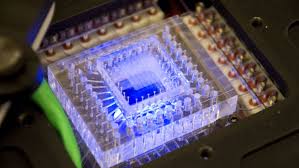
This has already been tested to see if it is space hardy enough to send to Mars and passed the tests so far. Of course it only works if it has a common origin with Earth life, but that is a possibility if the planets shared life in the early solar system - MOMA which is able to do chiral analysis (already mentioned above)
- Raman spectrometer able to do highly sensitive non destructive analysis able to detect molecular structure - this is another Exomars instrument
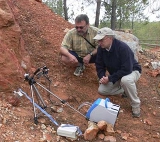
Field testing of the Exomars Raman spectrometer - Levin's new version of his labeled release experiment from Viking updated to detect chirality. This is of especial interest since it could detect extraterrestrial life based on novel chemistry - something that most of the other instruments can't do. Though it depends on the life to be cultivable, which the others don't require.
- Another idea for life detection through cultivation is the Life Detection Array (LIDA), proposed (but not accepted) for one of the 2007 Mars scout missions. It works by "inoculating" a nutrient chamber with tiny nanogram quantities of soil, and an identical chamber with sterilized sample. The experiment then checks to see if there were any changes in chemical parameters in the chamber such as concentrations of ions, and effects of biofouling with mono layers, with the unsterilized sample. The tiny quantities of sample help to eliminate chemical effects.
- On going NASA project to develop a miniaturized scanning electron microscope for Mars
- High resolution optical microscopes
FUTURE SURPRISES
In my next article, "Surprising Potential Habitats for life in the Solar System" I'll look at some of places we could look, suggested by scientists, from the likely to the unlikely. This includes of course various habitats on Mars, also Europa, and Encladus, and sub surface oceans of other icy moons in our solar system.
It also includes the clouds of Venus, and then with more exotic chemistry there is the possibility of life at ultra low temperatures on Titan, sulfur based life on Io, of course Carl Sagan's original gas giant biosphere idea (now thought not so probable as it was in the 1970s or when Arthur C. Clarke did the 2001 film), and life in liquid nitrogen on Triton. I'll also look at other possibilities such as the poles of Mercury, some asteroids, and comets.
There are also surprising places to look for past life including Mars' inner moon Phobos, and our own Moon which just possibly may have meteorite debris from the early solar system, with evidence of life.
High resolution close-up of Io's volcanic surface. Credit: NASA/Galileo
This is one of the more surprising places where exotic, perhaps sulfur based lifeforms just possibly might survive and reproduce.
It is hard to assess how likely or not this is, as we have no experience at all of any form of life apart from DNA. We can't reproduce the evolution of DNA based life from non living chemicals in a laboratory.
Life has developed many solutions we would never think to invent or engineer for ourselves. So, there is a remote possibility perhaps that it has arisen and been similarly creative in places like the liquid sulfur dioxide or hydrogen sulfide subsurface lakes of Io or in the liquid nitrogen below the surface of Neptune's moon Triton.
The scientists concerned think the probability of this is low, but can't yet be ruled out.
There may be traces of past or present life in all these places, for all we know. Or there may be few traces of life, or none at all. We have no way to know until we look.
The search has only just begun. We haven't sent anything to these places with a decent chance of finding cryptic life beneath the surface or sparse traces of ancient life. And life able to survive in such harsh conditions is likely to be so low in populations and slow growing that it would have a negligible effect on the planet atmospheres.
We have exciting times ahead of us. And if we don't find life in any of these places, then we will want to find out why it didn't arise. We may still learn much from looking at life's failures as well as its successes. How far did chemistry develop in the direction of life in these places? Did proto cells develop, able to reproduce after a fashion, but not exactly? Or "soups" creating conditions where chemicals such as RNA or PNA could replicate but without cell walls? Or what happened?
See also
- Might there be Microbes on the Surface of Mars?
- Why Phobos Might be the Best Place to go for a Sample Return from Mars Right Now
- If there is Life in Venus Cloud Tops - Do we Need to Protect Earth - or Venus - Could Returned XNA mean Goodbye DNA for Instance?
- Need For Caution For An Early Mars Sample Return - Opinion Piece
- Why Mars is NOT a Great Place to Live - Amazing to Explore From Orbit - with RC Rovers, and Nature Inspired Avatars</


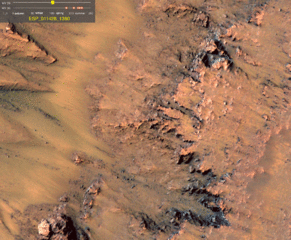

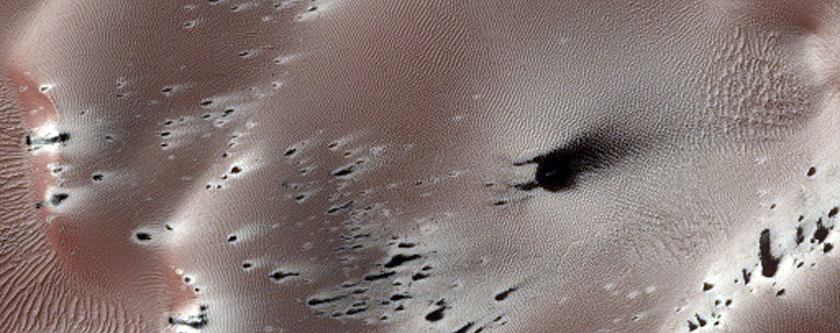
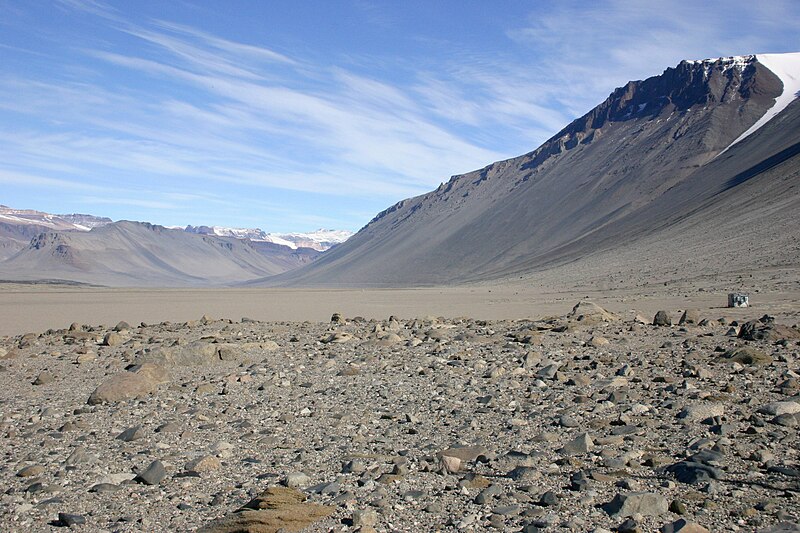

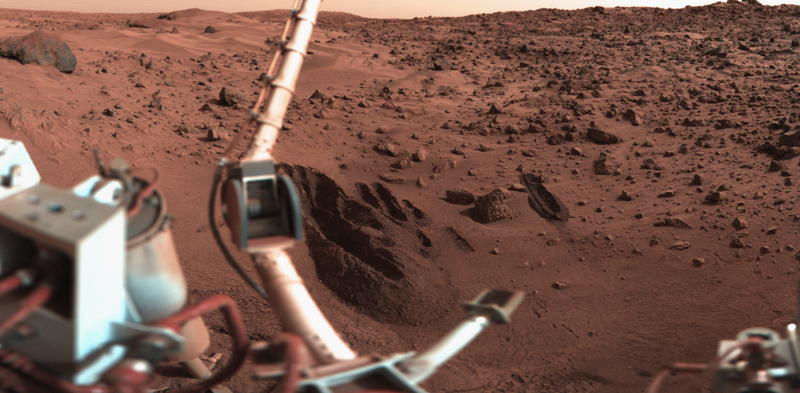
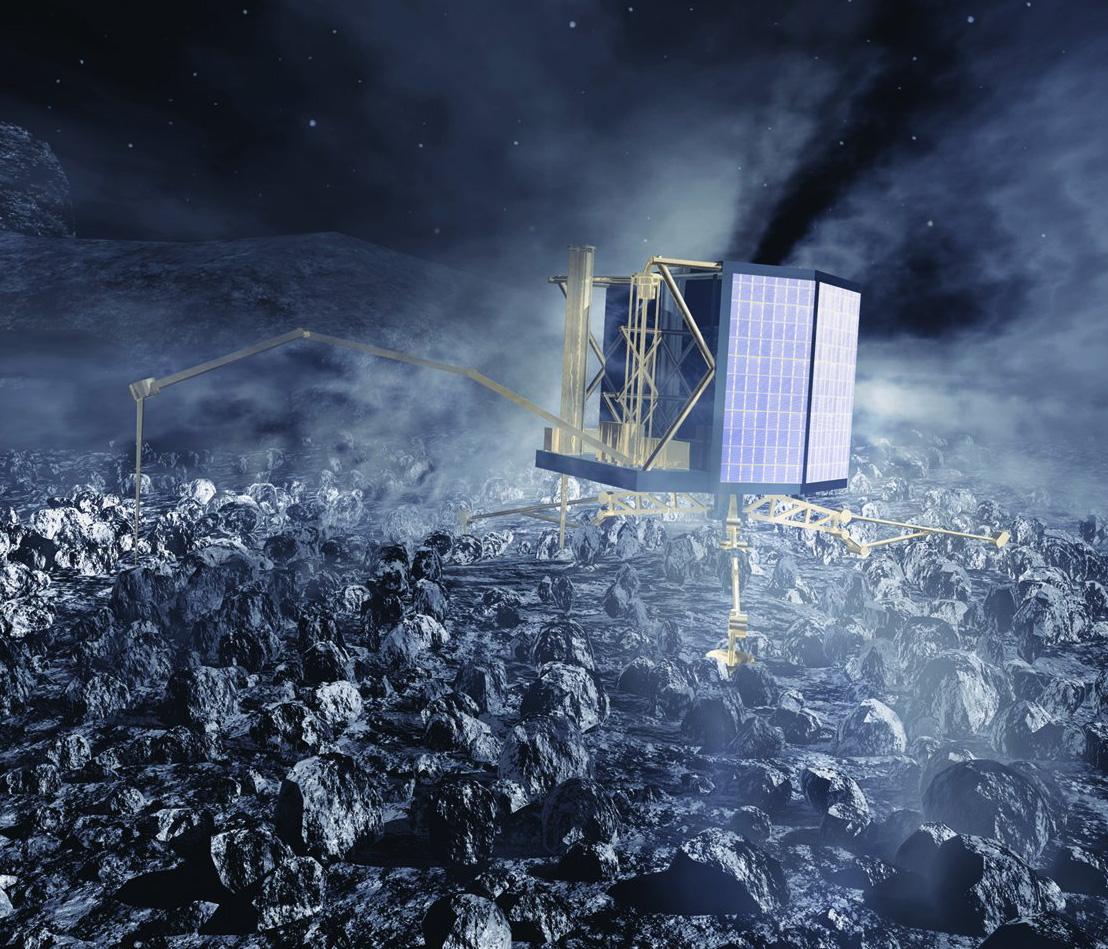

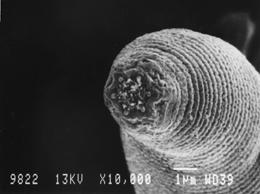


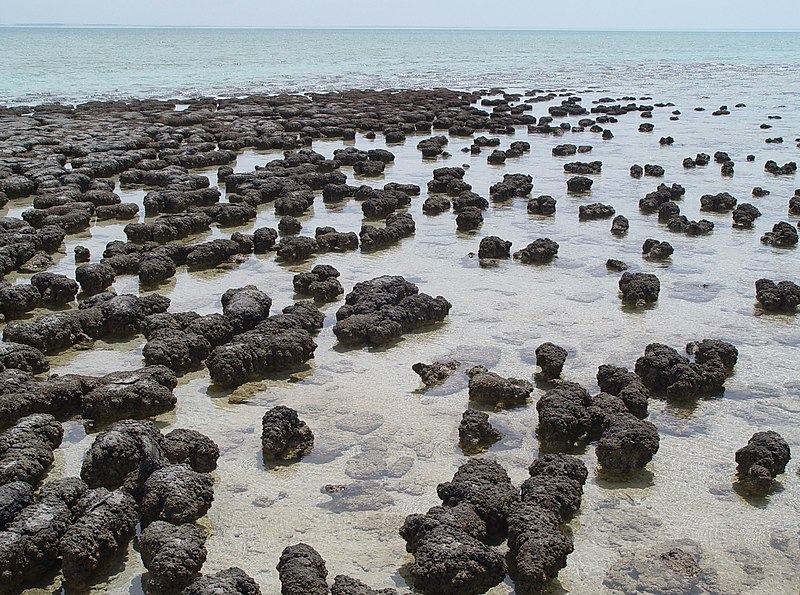



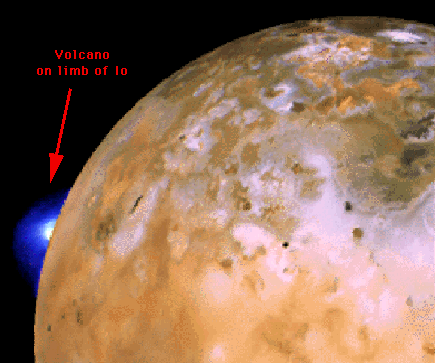



Comments